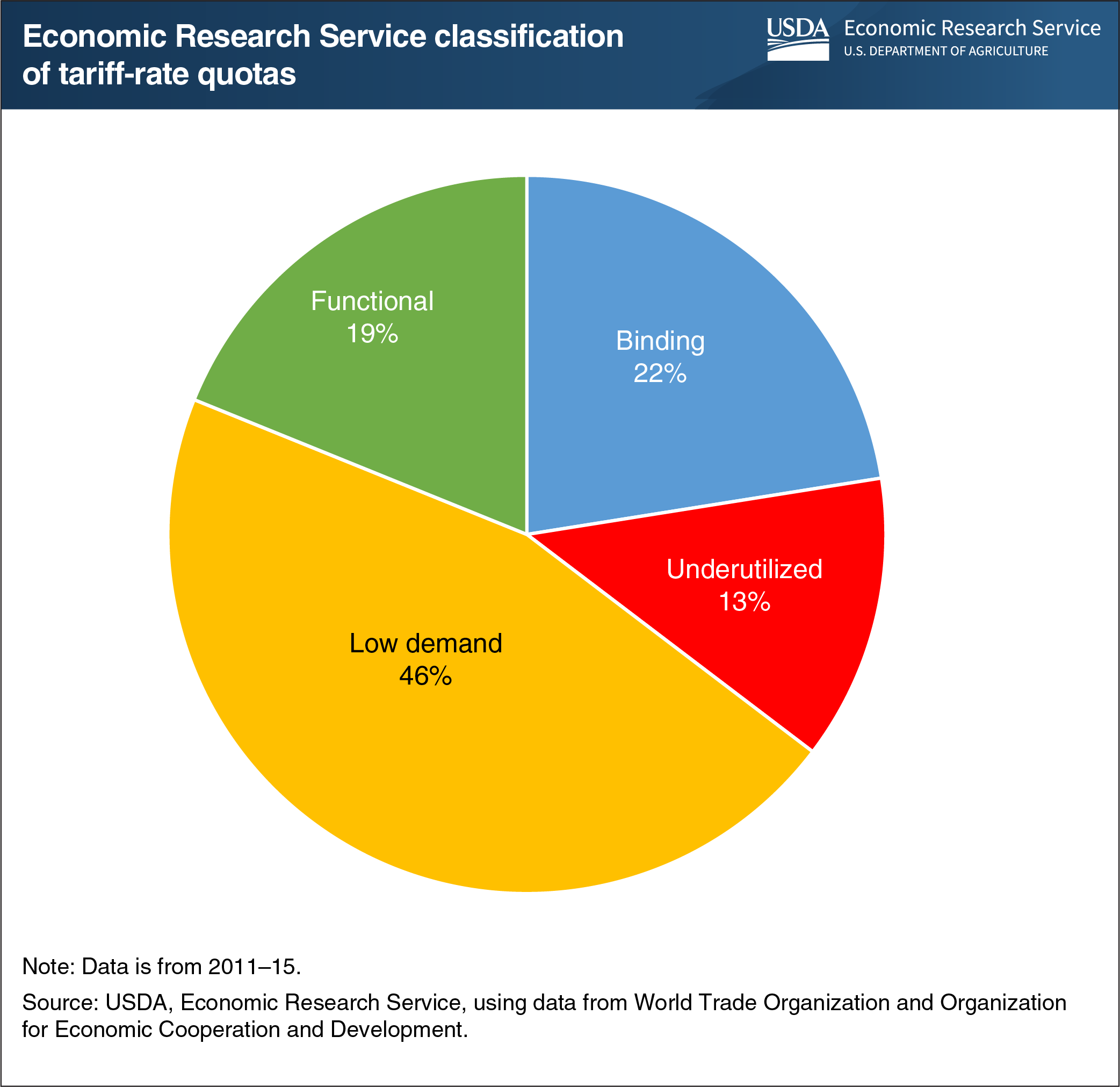Most agricultural tariff-rate quotas in the World Trade Organization do not classify as fully functional
- by Jayson Beckman, Fred Gale and Tani Lee
- 1/29/2021

Tariff-rate quotas (TRQs) are a two-tiered tariff available to member countries of the World Trade Organization, including the United States. They function by allowing a specified quantity of goods into a market at a low, in-quota rate. After the in-quota amount is filled, the product can still be imported, but at a higher tariff. While tariff-rate quotas often provide access for markets that might have been closed to trade, some might not function as intended. Researchers at USDA’s Economic Research Service (ERS) analyzed tariff-rate quotas under the World Trade Organization (WTO) and found that 19 percent can be characterized as functional, meaning they provide sufficient market access by functioning as designed. For 22 percent, the quota gets filled, but economic conditions suggest more trade could be occurring. These are called binding TRQs. Other tariff-rate quotas that often lack demand because of market conditions or high tariff rates—low demand TRQs—represent 46 percent of the tariff-rate quotas in the WTO. The remainder of tariff-rate quotas are classified as underutilized. For that 13 percent, the demand for additional imports may be constrained by administrative procedures or other nontariff measures that impede trade. This chart is drawn from the ERS report, Agricultural Market Access Under Tariff-Rate Quotas, January 2021.

